- GCN/BACODINE POSITION NOTICE
TITLE: GCN/SWIFT NOTICE
NOTICE_DATE: Sun 08 Jan 06 14:39:26 UT
NOTICE_TYPE: Swift-BAT GRB Position
TRIGGER_NUM: 176453, Seg_Num: 0
GRB_RA: 146.992d {+09h 47m 58s} (J2000),
147.080d {+09h 48m 19s} (current),
146.255d {+09h 45m 01s} (1950)
GRB_DEC: +31.916d {+31d 54' 59"} (J2000),
+31.888d {+31d 53' 18"} (current),
+32.149d {+32d 08' 56"} (1950)
GRB_ERROR: 3.00 [arcmin radius, statistical only]
GRB_INTEN: 5091 [cnts] Image_Peak=242 [image_cnts]
TRIGGER_DUR: 1.024 [sec]
TRIGGER_INDEX: 137 E_range: 25-100 keV
BKG_INTEN: 32418 [cnts]
BKG_TIME: 52735.05 SOD {14:38:55.05} UT
BKG_DUR: 8 [sec]
GRB_DATE: 13743 TJD; 8 DOY; 06/01/08
GRB_TIME: 52751.76 SOD {14:39:11.76} UT
GRB_PHI: -14.35 [deg]
GRB_THETA: 16.35 [deg]
SOLN_STATUS: 0x3
RATE_SIGNIF: 13.74 [sigma]
IMAGE_SIGNIF: 8.51 [sigma]
MERIT_PARAMS: +1 +0 +0 +0 +2 +4 +0 +0 +82 +1
SUN_POSTN: 289.69d {+19h 18m 46s} -22.20d {-22d 12' 14"}
SUN_DIST: 145.51 [deg]
MOON_POSTN: 37.51d {+02h 30m 02s} +17.63d {+17d 37' 50"}
MOON_DIST: 96.38 [deg]
MOON_ILLUM: 69 [%]
GAL_COORDS: 194.67, 50.09 [deg] galactic lon,lat of the burst (or transient)
ECL_COORDS: 138.28, 17.52 [deg] ecliptic lon,lat of the burst (or transient)
COMMENTS: SWIFT-BAT GRB Coordinates.
COMMENTS: This is a rate trigger.
COMMENTS: A point_source was found.
COMMENTS: This does not match any source in the on-board catalog.
COMMENTS: This does not match any source in the ground catalog.
COMMENTS: This is a GRB.
COMMENTS: This trigger occurred at longitude,latitude = 208.23,-2.24 [deg].
- red DSS finding chart
ps-file
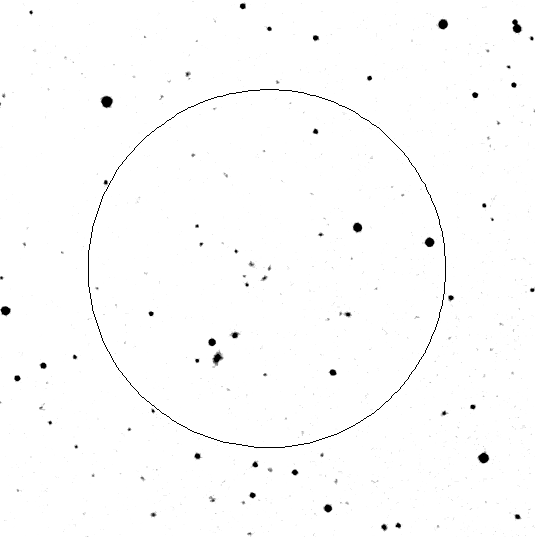
- GCN NOTICE
TITLE: GCN/SWIFT NOTICE
NOTICE_DATE: Sun 08 Jan 06 14:40:56 UT
NOTICE_TYPE: Swift-XRT Nack-Position
TRIGGER_NUM: 176453, Seg_Num: 0
POINT_RA: 146.967d {+09h 47m 52s} (J2000)
POINT_DEC: +31.884d {+31d 53' 04"} (J2000)
IMG_START_DATE: 13743 TJD; 8 DOY; 06/01/08
IMG_START_TIME: 52843.16 SOD {14:40:43.16} UT, 91.4 [sec] since BAT Trigger Time
COUNTS: 4 Min_needed= 20
STD_DEV: 0.00 Max_StdDev_for_Good=28.44 [arcsec]
PH2_ITER: 1 Max_iter_allowed= 4
ERROR_CODE: 1
COMMENTS: SWIFT-XRT Nack Position.
COMMENTS: No source found in the image.
- GCN NOTICE
TITLE: GCN/SWIFT NOTICE
NOTICE_DATE: Sun 08 Jan 06 14:42:48 UT
NOTICE_TYPE: Swift-BAT GRB Lightcurve
TRIGGER_NUM: 176453, Seg_Num: 0
GRB_RA: 146.992d {+09h 47m 58s} (J2000),
147.080d {+09h 48m 19s} (current),
146.255d {+09h 45m 01s} (1950)
GRB_DEC: +31.916d {+31d 54' 59"} (J2000),
+31.888d {+31d 53' 18"} (current),
+32.149d {+32d 08' 56"} (1950)
GRB_DATE: 13743 TJD; 8 DOY; 06/01/08
GRB_TIME: 52751.76 SOD {14:39:11.76} UT
TRIGGER_INDEX: 137
GRB_PHI: -14.35 [deg]
GRB_THETA: 16.35 [deg]
DELTA_TIME: -72.00 [sec]
TRIGGER_DUR: 1.024 [sec]
LC_URL: sw00176453000msb.lc
SUN_POSTN: 289.69d {+19h 18m 46s} -22.20d {-22d 12' 13"}
SUN_DIST: 145.51 [deg]
MOON_POSTN: 37.54d {+02h 30m 09s} +17.64d {+17d 38' 33"}
MOON_DIST: 96.35 [deg]
MOON_ILLUM: 69 [%]
GAL_COORDS: 194.67, 50.09 [deg] galactic lon,lat of the burst (or transient)
ECL_COORDS: 138.28, 17.52 [deg] ecliptic lon,lat of the burst (or transient)
COMMENTS: SWIFT-BAT GRB Lightcurve.
COMMENTS:
COMMENTS: The next comments were copied from the BAT_POS Notice:
COMMENTS: This is a rate trigger.
COMMENTS: A point_source was found.
COMMENTS: This does not match any source in the on-board catalog.
COMMENTS: This does not match any source in the ground catalog.
COMMENTS: This is a GRB.
COMMENTS: This trigger occurred at longitude,latitude = 208.23,-2.24 [deg].
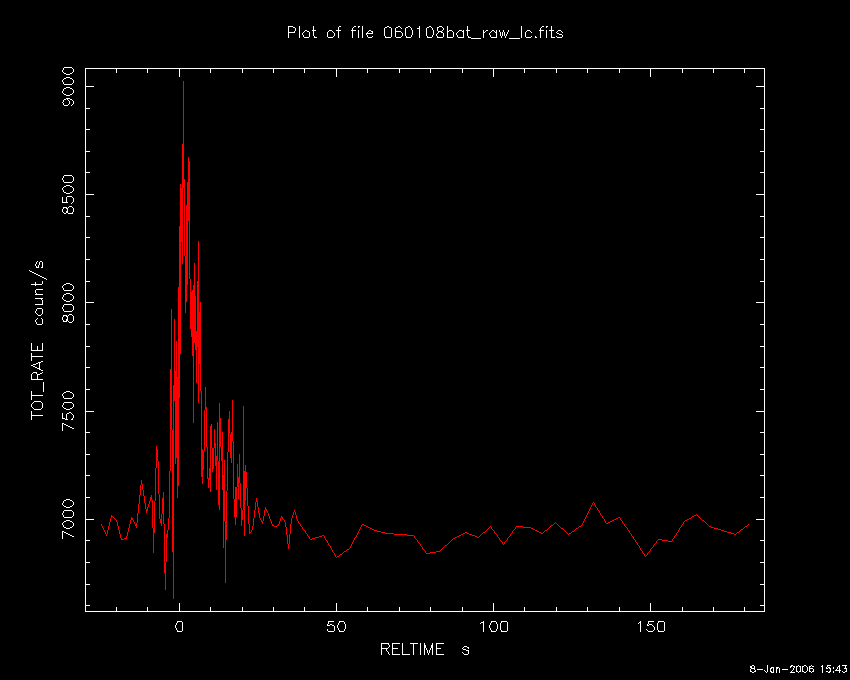
- GCN NOTICE
TITLE: GCN/SWIFT NOTICE
NOTICE_DATE: Sun 08 Jan 06 14:44:27 UT
NOTICE_TYPE: Swift-UVOT Source List
TRIGGER_NUM: 176453, Seg_Num: 0
POINT_RA: 146.967d {+09h 47m 52s} (J2000)
POINT_DEC: +31.884d {+31d 53' 04"} (J2000)
POINT_ROLL: 83.031d
IMG_START_DATE: 13743 TJD; 8 DOY; 06/01/08
IMG_START_TIME: 52841.97 SOD {14:40:41.97} UT, 90.2 [sec] since BAT Trigger Time
FILTER: 3, V
BKG_MEAN: 0.811
N_STARS: 13
X_OFFSET: 476 [pixels]
Y_OFFSET: 555 [pixels]
X_MAX: 1435 [pixels]
Y_MAX: 1514 [pixels]
DET_THRESH: 8
PHOTO_THRESH: 3
SL_URL: sw00176453000msufc0090.fits
SUN_POSTN: 289.69d {+19h 18m 46s} -22.20d {-22d 12' 12"}
SUN_DIST: 145.54 [deg]
MOON_POSTN: 37.55d {+02h 30m 13s} +17.65d {+17d 38' 54"}
MOON_DIST: 96.33 [deg]
MOON_ILLUM: 69 [%]
GAL_COORDS: 194.72, 50.07 [deg] galactic lon,lat of the pointing direction
ECL_COORDS: 138.28, 17.49 [deg] ecliptic lon,lat of the pointing direction
COMMENTS: SWIFT-UVOT Source List.
- GCN NOTICE
TITLE: GCN/SWIFT NOTICE
NOTICE_DATE: Sun 08 Jan 06 14:45:08 UT
NOTICE_TYPE: Swift-UVOT Processed Source List
TRIGGER_NUM: 176453, Seg_Num: 0
POINT_RA: 146.967d {+09h 47m 52s} (J2000)
POINT_DEC: +31.884d {+31d 53' 04"} (J2000)
POINT_ROLL: 83.031d
IMG_START_DATE: 13743 TJD; 8 DOY; 06/01/08
IMG_START_TIME: 52841.97 SOD {14:40:41.97} UT, 90.2 [sec] since BAT Trigger Time
FILTER: 3, V
BKG_MEAN: 0.811
N_STARS: 13
X_OFFSET: 476 [pixels]
Y_OFFSET: 555 [pixels]
X_MAX: 1435 [pixels]
Y_MAX: 1514 [pixels]
DET_THRESH: 8
PHOTO_THRESH: 3
SL_URL: sw00176453000msufc0090.fits
SUN_POSTN: 289.69d {+19h 18m 47s} -22.20d {-22d 12' 12"}
SUN_DIST: 145.54 [deg]
MOON_POSTN: 37.56d {+02h 30m 14s} +17.65d {+17d 39' 03"}
MOON_DIST: 96.32 [deg]
MOON_ILLUM: 69 [%]
GAL_COORDS: 194.72, 50.07 [deg] galactic lon,lat of the pointing direction
ECL_COORDS: 138.28, 17.49 [deg] ecliptic lon,lat of the pointing direction
COMMENTS: SWIFT-UVOT Processed Source List.
COMMENTS: All 4 attachments are included.
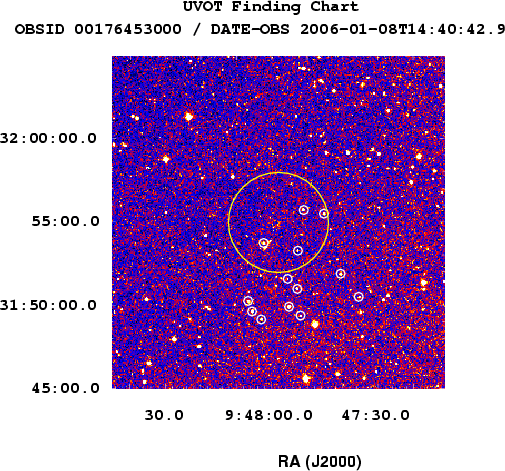
- GCN NOTICE
TITLE: GCN/SWIFT NOTICE
NOTICE_DATE: Sun 08 Jan 06 14:45:45 UT
NOTICE_TYPE: Swift-UVOT Image
TRIGGER_NUM: 176453, Seg_Num: 0
POINT_RA: 146.967d {+09h 47m 52s} (J2000)
POINT_DEC: +31.884d {+31d 53' 04"} (J2000)
ROLL: 83.031d
IMG_START_DATE: 13743 TJD; 8 DOY; 06/01/08
IMG_START_TIME: 52841.97 SOD {14:40:41.97} UT, 90.2 [sec] since BAT Trigger Time
FILTER: 3, V
EXPOSURE_ID: 158424042
X_OFFSET: 796 [pixels]
Y_OFFSET: 875 [pixels]
WIDTH: 160 [pixels]
HEIGHT: 160 [pixels]
X_GRB_POS: 956
Y_GRB_POS: 1035
BINNING_INDEX: 1
IM_URL: sw00176453000msuni0090.fits
SUN_POSTN: 289.69d {+19h 18m 47s} -22.20d {-22d 12' 12"}
SUN_DIST: 145.54 [deg]
MOON_POSTN: 37.56d {+02h 30m 15s} +17.65d {+17d 39' 11"}
MOON_DIST: 96.32 [deg]
MOON_ILLUM: 69 [%]
GAL_COORDS: 194.72, 50.07 [deg] galactic lon,lat of the pointing direction
ECL_COORDS: 138.28, 17.49 [deg] ecliptic lon,lat of the pointing direction
COMMENTS: SWIFT-UVOT Image.
COMMENTS: The GRB Position came from the Window Position in the Mode Command.
COMMENTS: The image has 2x2 binning (compression).
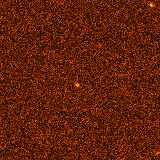
- GCN NOTICE
TITLE: GCN/SWIFT NOTICE
NOTICE_DATE: Sun 08 Jan 06 14:46:37 UT
NOTICE_TYPE: Swift-UVOT Processed Image
TRIGGER_NUM: 176453, Seg_Num: 0
POINT_RA: 146.967d {+09h 47m 52s} (J2000)
POINT_DEC: +31.884d {+31d 53' 04"} (J2000)
ROLL: 83.031d
IMG_START_DATE: 13743 TJD; 8 DOY; 06/01/08
IMG_START_TIME: 52841.97 SOD {14:40:41.97} UT, 90.2 [sec] since BAT Trigger Time
FILTER: 3, V
EXPOSURE_ID: 158424042
X_OFFSET: 796 [pixels]
Y_OFFSET: 875 [pixels]
WIDTH: 160 [pixels]
HEIGHT: 160 [pixels]
X_GRB_POS: 956
Y_GRB_POS: 1035
BINNING_INDEX: 1
IM_URL: sw00176453000msuni0090.fits
SUN_POSTN: 289.70d {+19h 18m 47s} -22.20d {-22d 12' 12"}
SUN_DIST: 145.54 [deg]
MOON_POSTN: 37.57d {+02h 30m 17s} +17.66d {+17d 39' 22"}
MOON_DIST: 96.31 [deg]
MOON_ILLUM: 69 [%]
GAL_COORDS: 194.72, 50.07 [deg] galactic lon,lat of the pointing direction
ECL_COORDS: 138.28, 17.49 [deg] ecliptic lon,lat of the pointing direction
COMMENTS: SWIFT-UVOT Processed Image.
COMMENTS: If you have elected to receive attachments:
COMMENTS: The uvot_catalog_image.fits.gz file does not exist; skipping the attachment.
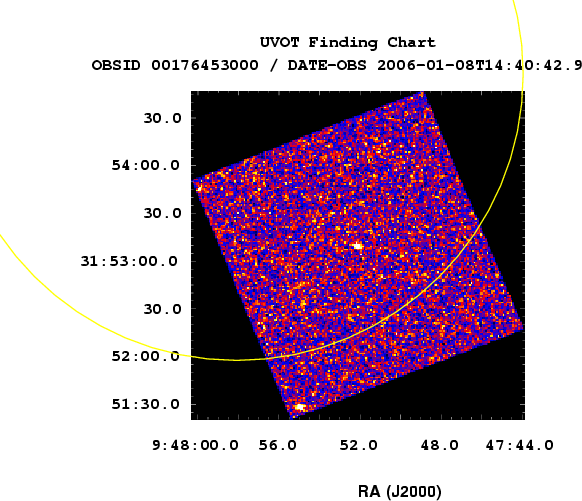
- GCN Circular #4443
S. Oates (UCL-MSSL), D. Burrows (PSU), M. De Pasquale (UCL-MSSL),
N. Gehrels (GSFC), J. Kennea (PSU), H. Krimm (GSFC/USRA),
K. Page (U. Leicester), F. Marshall (GSFC), S.T. Holland (GSFC/USRA),
D. Palmer (LANL), A. Parsons (GSFC)
report on behalf of the Swift team:
At 14:39:11.76 UT, Swift-BAT triggered and located GRB060108
(trigger=176453). The spacecraft slewed immediately.
The BAT on-board calculated location is RA,Dec 146.992d, +31.916d
{09h 47m 58s, +31d 54' 59"} (J2000), with an uncertainty of 3 arcmin
(radius, 90% containment, stat+sys). The BAT light curve showed a
single peak structure with a FRED time profile and a total duration of
~20 sec. The peak count rate was ~2000 counts/sec (15-350 keV),
at ~4 seconds after the trigger.
XRT started observing the field at 14:40:43 UT, 91 seconds after the BAT
trigger. Although no source was found by the on-board algorithm, the raw
X-ray light-curve implies there is a fading source in the field of view.
However, we will have to wait for the Malindi data to determine the
position of this source.
UVOT took a finding chart exposure of 200 seconds with the V filter
starting 91 seconds after the BAT trigger. No afterglow candidate has
been found in the initial data products. The 2.7'x2.7' sub-image covers
19% of the BAT error circle. The 3-sigma upper limit is 18.3 mag.
The 8'x8' region for the list of sources generated on-board covers
87% of the BAT error circle. The list of sources is typically complete
to about 18.0 mag. No correction has been made for
the expected visual extinction of about 0.1 magnitudes.
- GCN Circular #4444
K.L. Page, S. Oates and D.N. Burrows report on behalf of the Swift-XRT
team:
The Swift XRT began observing GRB 060108 (Oates et al., GCN 4443) 91
seconds after the BAT trigger. Analysis of the first pass of Malindi data
reveal a fading, uncatalogued X-ray source at:
RA(J2000) = 09h 48m 01.5s
Dec(J2000) = +31d 55' 03.2"
with an estimated radial uncertainty of 3.7" (90% containment), including
corrections for the XRT boresight. This position is 43" from the
on-board BAT value given in GCN 4443.
- GCN Circular #4445
T. Sakamoto (GSFC/NRC), L. Barbier (GSFC), S. Barthelmy (GSFC),
J. Cummings (GSFC/NRC), E. Fenimore (LANL), N. Gehrels (GSFC),
D. Hinshaw (GSFC-SPSYS), D. Hullinger (GSFC/UMD), H. Krimm (GSFC/USRA),
C. Markwardt (GSFC/UMD), P. Meszaros (PSU), D. Palmer (LANL),
A. Parsons (GSFC), G. Sato (ISAS), J. Tueller (GSFC)
on behalf of the Swift-BAT team:
Using the data set from T-60.7 to T+104.6 sec from the recent telemetry
downlink, we report further analysis of BAT GRB 060108 (trigger #176453)
(Oates, et al., GCN 4443). The BAT ground-calculated position is
RA,Dec = 147.016, 31.933 {9h 48m 3.9s, 31d 55' 59.8"} (deg; J2000)
+- 1.4 arcmin, (radius, sys+stat, 90% containment). The partial coding
was 100%.
The mask-tagged lightcurve shows a rise starting at T-5 sec, peaking
at T+1 sec, and then a somewhat slower fall with a small secondary
peak at T+10 sec (~4 sec wide). T90 (15-350 keV) is (14.4 +- 1) sec
(estimated error including systematics).
The power law index of the time-averaged spectrum is 2.01 +- 0.17.
The fluence in the 15-150 keV band is (3.7 +- 0.4) x 10^-7 erg/cm2.
The 1-sec peak photon flux measured from T+0.60 sec in the 15-150 keV
band is (0.7 +- 0.1) ph/cm2/sec. All the quoted errors are at the 90%
confidence level.
- GCN Circular #4446
E.Sonoda,S.Maeno,S.Masuda,Y.Nakamura,M.Yamauchi
(University of Miyazaki)
"We have observed the field covering the error circle of
GRB060108 (GCN4443) with the unfiltered CCD camera on
the 30-cm telescope at University of Miyazaki.
The observation was started 14:59:57 UT on Jan.8.
We have compared our image with the USNO A2.0 catalog .
Preliminary analysis shows there is no new source brighter than 17.2 mag."
- GCN Circular #4447
C. Guidorzi, C.G. Mundell, A. Gomboc, A. Monfardini, I. A. Steele,
C.J. Mottram, R.J. Smith, M.F. Bode (Liverpool JMU), P. O'Brien, E. Rol,
N. Bannister (Leicester) report:
"The 2-m Faulkes Telescope North (Hawaii) robotically followed up
GRB060108 (SWIFT trigger 176453) 2.7 min after the GRB trigger time.
The automatic "detection mode" procedure did not find any afterglow
candidate brighter than R~19.5 mag (vs USNOB1) from a 3x10s exposure.
In particular, we do not find any optical candidate corresponding to the
X-ray afterglow found by XRT (Page et al., GCN 4444).
The visual extinction of the field is negligible (A_V~0.1) according
to the Schlegel et al. maps.
Further automated observations were carried following on from the
"detection mode" exposures. Manual inspection of both sets of
observations also does not find an afterglow candidate to the following
limiting magnitudes."
-----------------------------------------------
Mid Time Filter Tot.Exposure Lim. Mag.
since GRB
3.1 min R 30s 19.5
11.7 min R 240s 20.2
-----------------------------------------------
- GCN Circular #4448
Richard J. Cool (Arizona), Daniel J. Eisenstein (Arizona), David
W. Hogg (NYU), Michael R. Blanton (NYU), J. Brinkmann (APO), David
J. Schlegel (LBNL), Donald P. Schneider (PSU), and Daniel E. Vanden
Berk (PSU) report:
The Sloan Digital Sky Survey (SDSS) imaged the field of burst
GRB060108 prior to the burst. As these data should be useful
as a pre-burst comparison and for calibrating photometry, we are
supplying the images and photometry measurements for this GRB field
to the community.
Data from the SDSS, including 5 FITS images, 3 JPGS, and
3 files of photometry and astrometry, are being placed at
http://mizar.as.arizona.edu/~grb/public/GRB060108
We supply FITS images in each of the 5 SDSS bands of a 8'x8' region
centered on the GRB position (ra=147.006 (09:48:01.5), dec=31.9176
(31:55:03.2); GCN 4444), as well as 3 gri color-composite JPGs (with
different stretches). The units in the FITS images are nanomaggies
per pixel. A pixel is 0.396 arcsec on a side. A nanomaggie is
a flux-density unit equal to 10^-9 of a magnitude 0 source or,
to the extent that SDSS is an AB system, 3.631e-6 Jy. The FITS
images have WCS astrometric information.
In the file GRB060108_sdss.calstar.dat, we report photometry
and astrometry of 352 bright stars (r<20.5) within 15' of the
burst location. The magnitudes presented in this file are asinh
magnitudes as are standard in the SDSS (Lupton 1999, AJ, 118,
1406). Beware that some of these stars are not well-detected in
the u-band; use the errors and object flags to monitor data quality.
In the files GRB060108_sdss.objects_flux.dat and
GRB060108_sdss.objects_magnitudes.dat, we report photometry of
884 objects detected within 6' of the GRB position. We have
removed saturated objects and objects with model magnitudes
fainter than 23.0 in the r-band. The fluxes listed in
GRB060108_sdss.objects_flux.dat are in nanomaggies while the
magnitudes listed in GRB060108_sdss.objects_magnitudes.dat are
asinh magnitudes.
All quantities reported are standard SDSS photometry, meaning that
they are very close to AB zeropoints and magnitudes are quoted
in asinh magnitudes. Photometric zeropoints are known to about
2% rms. None of the photometry is corrected for dust extinction.
The Schlegel, Finkbeiner, and Davis (1998) predictions for this
region are A_U=0.105 mag, A_g=0.077 mag, A_r = 0.056 mag, A_i=0.043
mag, and A_z=0.030 mag.
The file GRB060108_sdss.spectro.dat contains a list of the 2 objects
with SDSS spectroscopy within 6 arcminutes of the GRB position.
In addition to the redshift and 1-sigma error for each object,
this file also lists the object spectroscopic classification.
SDSS astrometry is generally better than 0.1 arcsecond per
coordinate. Users requiring high precision astrometry should take
note that the SDSS astrometric system can differ from other systems
such as those used in other notices; we have not checked the offsets
in this region.
See the SDSS DR4 documentation for more details:
http://www.sdss.org/dr4
These data have been reduced using a slightly different pipeline
than that used for SDSS public data releases. We cannot guarantee
that the values here will exactly match those in the data release
in which these data are included. In particular, we expect the
photometric calibrations to differ by of order 0.01 mag.
This note may be cited, but please also cite the SDSS data
release paper, Abazajian et al. (AJ, 129, 1755, 2005), when using the
data or referring to the technical documentation.
- GCN Circular #4450
A. J. Blustin (UCL-MSSL), S. R. Oates (UCL-MSSL), F. Marshall (GSFC),
A. Smale (NASA HQ), N. Gehrels (GSFC) on behalf of the Swift/UVOT team
The Swift/UVOT began observing the field of GRB 060108 at 14:40:27 on
2006-01-08 whilst settling on the target, 76 s after the BAT trigger
(Oates et al., GCN 4443). No new source is detected at the XRT position
(Page et al., GCN 4444) in coadded images with any of the filters down
to the following 3-sigma magnitude upper limits. These values are not
corrected for Galactic extinction; E(B-V) = 0.018.
Filter T_range(s) Exp(s) 3sigUL(mag)
V 76-1097 357.3 19.4
B 459-887 99.6 19.7
U 404-833 99.6 19.3
W1 350-5624 521.1 20.0
M2 296-5195 999.4 20.6
W2 567-995 99.6 19.3
White 512-941 99.6 19.7
- GCN Circular #4451
K. Yanagisawa (OAO/NAOJ), H. Toda, and N. Kawai (Tokyo Tech) report
on behalf of the Mitsume collaboration:
"We have observed the field of GRB 060108 (Oates et al. GCN 4443,
Sakamoto et al. GCN 4445) with the three-color Mitsume 50 cm
telescopes at Okayama, Japan starting at 15:06:34 UT (T_burst+0.46h)
until 15:58:02 UT (T_burst+1.3h) for an effective exposure of 40 min
(60sec x 40).
We did not find an object in the XRT error circle (Page et al. GCN
4444) with the following 10-sigma upper limits that are calibrated
against the SDSS data (Cool et al. GCN 4448) where conversion for Rc
and Ic magnitudes were made using the formula by Smith et al. (2002):
g': 19.4
Rc: 18.9
Ic: 18.2
The images obtained at Okayama can be viewed at
http://bragi.oao.nao.ac.jp/support/telescope/grb50/images/GRB060108A.pdf
- GCN Circular #4452
P. D'Avanzo (INAF/OABr), S. Piranomonte (INAF/OAR), D. Malesani (SISSA),
G. Chincarini (Univ. Milano-Bicocca), L. Stella (INAF/OAR) and G.
Tagliaferri (INAF/OABr), report on behalf of the MISTICI collaboration:
We observed the field of GRB 060108 (Oates et al., GCN 4443; Sakamoto et
al., GCN 4445) with the ESO-VLT UT1 equipped with the ISAAC camera,
starting on Jan 9.307 UT (0.7 d after the GRB). Coaddition of ten 90 s
exposures does not reveal any object inside the XRT error circle (Page
et al., GCN 4444) down to a limiting magnitude J = 22.3 (3 sigma
confidence level).
This limit (see also Guidorzi et al., GCN 4447) implies a faint
afterglow, as observed in other Swift GRBs. If this faintness is due to
a Lyman dropout, the non detection in J implies a redshift z > 9.
This message can be cited.
- GCN Circular #4453
K.L. Page, A.P. Beardmore, M.R. Goad, D.N. Burrows, J. Greiner (MPE) & D.
Hinshaw (GSFC-SPSYS) report on behalf of the Swift-XRT Team:
We have analysed the first 7 orbits of X-ray data for GRB 060108. A ~9ks
PC mode image gives a refined X-ray position of:
RA(J2000) = 09h 48m 01.6s
Dec(J2000) = +31d 55' 04.6"
with an estimated uncertainty of 3.4" (radius, 90% containment), including
corrections for the XRT boresight. This is 1.9" from the XRT position
given by Page et al. (GCN 4444) and 61" from the refined
(ground-calculated) BAT position (Sakamoto et al.; GCN 4445).
Spectra from both the first and later orbits of data are consistent with a
single power-law model, with Gamma = 1.76 +/- 0.19. There is no evidence
for absorption in excess of the Galactic value of 1.7e20 cm^-2. From the
first orbit of PC data (107-1072 seconds after the trigger), the 0.3-10
keV observed (unabsorbed) flux was calculated to be 1.08e-11 (1.13e-11)
erg cm^-2 s^-1.
The PC light-curve shows some slight flaring activity, with the underlying
continuum being well modelled by a broken power-law with parameters:
alpha_1 = 2.2 +/- 0.5
t_break = 280+/- 64 s
alpha_2 = 0.43 +/- 0.06
This predicts the observed (unabsorbed) flux at 24 hours after the burst
to be 9.8e-13 (1.0e-12) erg cm^-2 s^-1.
- GCN Circular #4457
A.J. Levan, N.R. Tanvir (U. Hertfordshire), L. Fuhrman (JACH) report on
behalf of a larger collaboration:
We observed the field of GRB 060108 with UKIRT/WFCAM. A 30 min K-band
exposure was made in ~0.9 arcsec seeing, starting Jan 08 15.23 UT
(ie. approximately 45 minutes post-burst). Our provisional analysis shows
no evidence for any source within the the XRT afterglow error circle
reported by Page et al. (GCN 4453).
This suggests that the optical/IR afterglow of GRB 060108 was
intrinsically sub-luminous, since otherwise either very high redshift,
or substantial dust extinction would be required to produce our
non-detection.
- GCN Circular #4458
S. B. Cenko (Caltech), J. Colbert, H. Teplitz (JPL / Spitzer Science
Center), and D. B. Fox (Penn State) report on behalf of the
Caltech-NRAO-Carnegie GRB collaboration:
We have imaged the field of GRB060108 (Oates et al., GCN 4443; Sakamoto et
al., GCN 4445) with the Wide-Field Infrared Camera mounted on the Palomar
200-inch Hale Telescope. Our observations consisted of 30 x 30 s images
in the Ks band taken in moderate-to-poor external conditions (seeing ~
1.5-2.0"). The mean epoch of our observations is approximately 06:45 UT
January 9 (~ 16.1 hours after the burst). We note these observations are
roughly contemporaneous with the VLT J-band observations reported by
D'Avanzo et al. (GCN 4452).
Inside the revised XRT error circle (Page et al., GCN 4453) we find no
sources. Our limiting magnitude, calculated with respect to several 2MASS
objects in the field, is Ks > 18.5.
Performing a similar analysis to Malesani et al. (GCN 4454) and using the
XRT results from Page et al. (GCN 4453), we find we can constrain the
x-ray-to-optical spectral index, beta_OX, to be < 0.7. While this in
itself is not inconsistent with the standard fireball model (Sari, Piran,
& Narayan, 1998, ApJ, 497, L18), together with the deep early R-band
(Guidorzi et al., GCN 4447) and contemporaneous J-band limits, this
provides further evidence for the exceptional (i.e. either very dark or
very high-z) nature of this event.
- GCN Circular #4459
D. Yonetoku, T. Murakami, H. Kodaira, S. Okuno, S.
T. Kidamura (Kanazawa Univ.) and Y. Kobayashi (NAOJ)
on behalf of the Kanazawa team:
We have observed the field of GRB 060108 (Oates et al., GCN 4443;
Sakamoto et al., GCN 4445) with H and Ks-bands using the 1.3m telescope
on the roof top of ISAS, Japan. The observation was started 12 minutes
after the BAT trigger. We found no new source down to a limiting
magnitude of H = 15.8 and Ks = 15.8 (5 sigma upper limit) within
the position of the XRT error circle (Page et al., GCN 4453).
- GCN Circular #4475
J. S. Bloom (UC Berkeley), D. Walther, C. Trujillo (Gemini), J. X.
Prochaska (UCO/Lick), R. Foley (UC Berkeley), and H.-W. Chen
(Chicago) report:
"Using the GMOS instrument on Gemini North, we observed the field of
GRB 060108 (Sakamoto et al.; GCN 4445) in z-band for 1080 sec. By
comparison with the SDSS pre-imaging (Cool et al. 4448), we place an
approximate 5 sigma upper limit of any afterglow flux of z = 24.2 AB
mag at the position of the X-ray transient (Page et al. 4453). There
is a faint enhancement (~1 sigma) at the XRT position but we cannot
verify that it is indeed a real source. Further analysis of the IR
imaging is on-going."
A comparison chart (North up, East left) may be found at:
http://astro.berkeley.edu/~jbloom/grb060108.ps
This message may be cited.
- GCN Circular #4484
S. Piranomonte (INAF/OAR), P. D'Avanzo (INAF-OABr), D. Malesani (SISSA),
G. Chincarini (Univ. Milano-Bicocca), L. Stella (INAF/OAR) S. Campana,
S. Covino and G. Tagliaferri (INAF/OABr), report on behalf of the
MISTICI collaboration:
We observed again the field of GRB 060108 (Oates et al., GCN 4443;
Sakamoto et al., GCN 4445) in the K band with the ESO-VLT UT1 equipped
with the ISAAC camera, starting on Jan 11.283 UT (2.7 d after the GRB).
Coaddition of sixty 60 s exposures does not reveal any object inside the
XRT error circle (Page et al., GCN 4444) down to a limiting magnitude K
= 22.1 (3 sigma confidence level).
This message can be cited.
- GCN Circular #4500
N. Butler and J. S. Bloom (UC Berkeley) report:
We find 34 X-ray sources with S/N>3 in the XRT PC mode data for GRB
060108 (Oates et al., GCN 4443; Page et al. GCN 4444) using wavdetect,
neglecting the first observation where the GRB afterglow dominated.
The PC mode data from the 2nd through 5th XRT observations have a total
effective exposure of 57.8 ksec. Comparing the wavdetect centroids to
positions of nearby optical sources detected in SDSS DR4 r-band images
(the DR4 data release is described in Adelman-McCarthy et al. 2005;
astro-ph/0507711), we note that very few (1 in 34) of the X-ray positions
are within 3."4 (the XRT error radius reported by Page et al. GCN 4453)
of an optical source. However, 40% of the X-ray sources have optical
counterparts in a narrow cluster of displacements to the North-East.
This is a reasonable number of associations (e.g., Giacconi, et al. 2001,
ApJ, 551, 624), given the depths of the SDSS r-band images (r<~22.2)
and the XRT observations (fx>~5x10^-15 erg cm^-2 s^-1). We note that
most of the optical counterparts are categorized as galaxies or faint
QSOs in the SDSS DR4.
Using these optical/X-ray associations and also accounting for the
sources with no apparent association, we derive an XRT frame offset of
(dRA,dDec) = ( 4.29 , 2.75 ) arcsec, with a 0."7 error (90% conf.).
We calculate a refined position for the GRB 060108 X-ray afterglow of:
RA = 09h 48m 01.92s ; Dec = +31d 55' 07."8 (J2000),
with an uncertainty of 0."9 (90% conf.).
The optical - X-ray offsets are plotted at:
http://astro.berkeley.edu/~nat/060108/060108_offsets.ps and
http://astro.berkeley.edu/~nat/060108/060108_Xsources.jpg
At this position, we find a faint galaxy in our z-band Gemini imaging
(GCN 4475) taken at Jan 10.60 UT. We suggest that this is the host of
GRB 060108. An image of the field is posted at:
http://astro.berkeley.edu/~jbloom/grb060108-xcorr.ps.gz
We urge others with earlier-time imaging to inspect this location in
search of an afterglow.
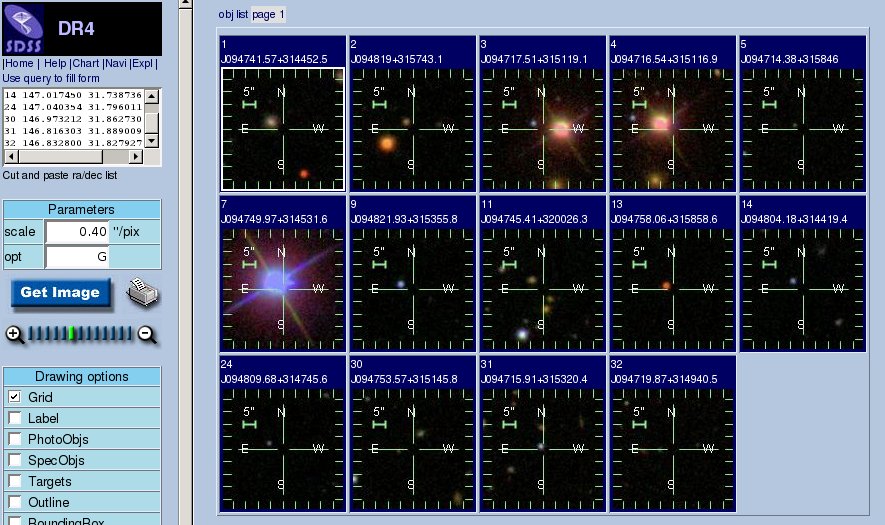
- GCN Circular #4501
P. D'Avanzo (INAF/OABr), D. Malesani (SISSA), G. Tagliaferri, S. Campana
(INAF/OABr), S. Piranomonte (INAF/OAR), G. Chincarini (Univ.
Milano-Bicocca), and L. Stella (INAF/OAR), report on behalf of the
MISTICI collaboration:
After the revision of the coordinates suggested by Butler & Bloom (GCN
4500) of the X-ray afterglow of GRB 060108 (Oates et al., GCN 4443;
Page, Oates & Burrows, GCN 4444; Sakamoto et al., GCN 4445), we looked
again at our VLT near-infrared images (D'Avanzo et al., GCN 4452;
Piranomonte et al., GCN 4484).
The object reported by Butler & Bloom (GCN 4500) is clearly detected in
our deep K-band image, taken on Jan 11.28 UT, and is likely extended.
However, it is not seen in the (shallower) J-band image taken on Jan
9.31 UT. The implied color is J-Ks > 1.8.
This message can be cited.
- GCN Circular #4502
A. Monfardini, C.G. Mundell, C. Guidorzi, I. A. Steele, A. Gomboc,
C.J. Mottram, R.J. Smith, D. Bersier, A. Melandri, S. Kobayashi,
D. Carter, M.F. Bode (Liverpool JMU), P. O'Brien, E. Rol, N. Bannister
(Leicester) report:
"The 2-m Faulkes North Telescope observed GRB060108 (Guidorzi et al,
GCN4447) starting within minutes from the alert. We report evidence for an
afterglow in i' band at the position:
RA: 09:48:01.98 DEC: +31:55:08.6 (~0.5" error)
Fully consistent with the revised XRT position suggested in GCN4500 by N.
Butler and J. S. Bloom. A finding chart is in:
http://www.astro.livjm.ac.uk/~cgm/FTNvsSDSS.pdf
(candidate within the green square)
By comparison with USNOB1 we estimated i' = 21.6 +/- 0.3 at a mean epoch
of about 35minutes from the GRB.
This message can be cited."
- GCN Circular #4503
A.J. Levan, N.R. Tanvir (U. Hertfordshire), L. Fuhrman (JACH) report
on behalf of a larger collaboration.
Our UKIRT K-band observations of GRB 060108 reported originally
in GCN 4457 also show an object at the location of the revised X-ray
afterglow position suggested by Butler & Bloom (GCN 4500). The source is
point like and has a magnitude of approximately K=18.4. The implied i-K
colour based on the optical detection at 35 minutes (Monfardini et al. GCN
4502) is i-K ~ 3.
We note that inspection of the SDSS g-band pre-image of the field of GRB
060108 also reveals a marginal detection at the location of this source,
presumably the host galaxy.
Further observations are planned.
- GCN Circular #4539
A. Melandri (Liverpool), A. Grazian (Rome), C. Guidorzi (Liverpool),
A. Monfardini (Liverpool), C.G. Mundell (Liverpool), A. Gomboc
(Liverpool) report:
"Following the identification of the afterglow of GRB060108 (Butler &
Bloom GCN 4500, Monfardini et al. 4502, D'Avanzo et al. 4501) we have
combined contemporaneous optical and NIR photometry, derived from
BRi' Faulkes North Telescope and UKIRT imaging (Levan et al. GCN 4503),
with the VLT J-band upper limit (D'Avanzo et al. GCN 4501) extrapolated
to the same time period assuming three powerlaw decay index values:
alpha = 0.5, 1.0, 2.0 ( F(t)~t^(-alpha) ).
Adopting a chi-square minimisation of the observed spectral energy
distribution, we have derived upper limits and best fitting redshifts
for the three power law indices. We assumed a power-law energy spectrum:
F(nu)~nu^(-beta).
Conservatively, we derive z<2.7 with z_best = 2.03 and
1.14 < beta < 1.22.
This confirms that GRB060108 is not an ultra-high z burst."
- GCN Circular #4627
Richard J. Cool (University of Arizona) reports:
Based upon feedback from users of our online releases of SDSS photometry
and astrometry of GRB fields, we have discovered an error in several past
releases. In preparing the releases, we inadvertently neglected to remove
duplicate listings of several objects from the online catalogs. Several
of the secondary observations of the objects included are of lower
photometric quality than the primary observation and thus photometric
zeropoints derived with them may shift slightly. We removed all duplicate
observations from the online catalogs for past
bursts located at
http://mizar.as.arizona.edu/grb/public/.
We apologize for any inconvenience.
![]() Previous IAU Circulars
Previous IAU Circulars 




